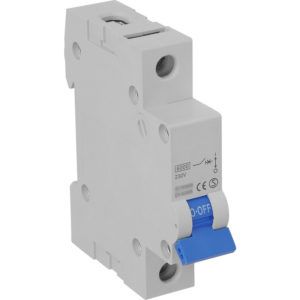Difference between Class A, B, C, D, K and Z Type Miniature Circuit Breakers (MCB)

MCBs are classified into different types based on their tripping characteristics which are the range of tripping fault current at which the device operates in the event of a short circuit or overload.
Type A Miniature Circuit Breakers
Type A MCBs are highly sensitive devices that trip instantaneously when the current reaches 2 to 3 times the rated current.
Class A MCBs are designed for low levels of overcurrent protection, they are mainly used for the protection of highly sensitive devices.
Type B Miniature Circuit Breakers
A type B MCB trips when the current is 3 to 5 times the rated current with an operating time of 0.04 to 13 Seconds. It is used for purely resistive loads that are non-inductive loads or with a very small inductive load that has no considerable amount of inductance.
These types are mainly used for low-power domestic applications like lighting circuits, home wirings, etc.
Type C Miniature Circuit Breakers
Type C operates for a current value of 5 to 10 times than the rated current with an operating time of 0.04 to 5 Seconds. These are used with inductive loads like motors, fans, transformers, etc. which have a chance of sudden current rush or surges.
Mainly used in commercial and industrial applications.
Type D Miniature Circuit Breakers
Type D has a trip current of 10 to 20 times than the rated current with an operating time of 0.04 to 3 Seconds. It is used for very high inductive loads.
Mainly used in high-power industrial applications for types of equipment like heavy motors, transformers, x-rays, welding, etc.
Type K Miniature Circuit Breakers
Type K trip when the current reaches 8 to 12 times the rated current with an operating time of less than 0.1 Second. These are used for inductive loads which have a chance of high inrush currents like motor circuits.
Type Z Miniature Circuit Breakers
Type Z MCBs operate for a current value between 2 to 3 times the rated current with an operating time of less than 0.1 Second. Class Z MCBs are designed for the protection of semiconductor devices and are used in electronic circuits.
Type A, K, and Z MCBs have extremely small operating times compared to type B, C, and D MCBs. Class A, K, and Z are highly sensitive breakers that operate very quickly in a short time used to protect sensitive devices.
Very useful and knowledgeable for electrical people those who are working in site as well as in the designing in the field .
very helpful for all
Write all types of MCB with their individual image for best experience of teaching.
Thank you for your suggestion, we will consider it.
The type K, is similar to D, but has a longer overload time. Used for inductive loads, like motors with big rotor mass. So they are not comparable to A or Z.
it is very useful thanks for your information.
Very well explained and very useful blog about the differences of MCB. Thanks for sharing the differences of all types of MCB.
What type of MCB is recommended for control circuit made up of power contactors , relays and indication lamps?
type c is suitable for these loads
Very useful information.
But what is the difference between type A and type Z MCBs, as both have the same tripping current range and highly sensitive?
Very useful thank you
Very useful information about MCB types .
Very well explained. Helped me a lot !
Is a type F circuit breaker an RCBO?
Interesting
Very useful .thanks a lot
Interesting